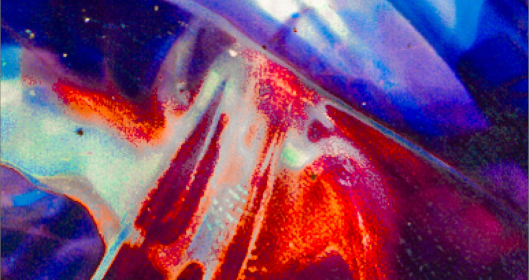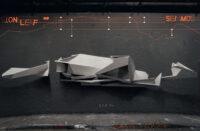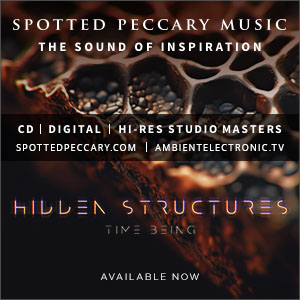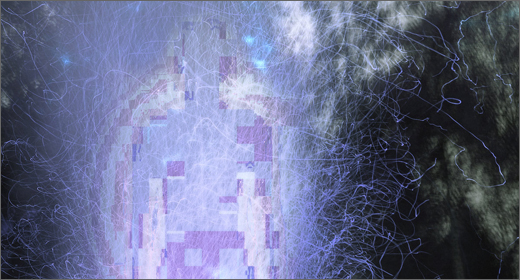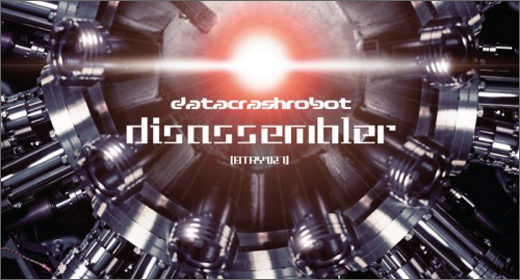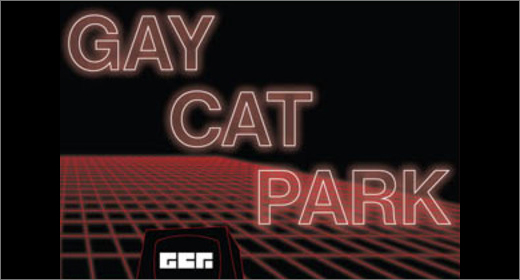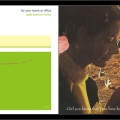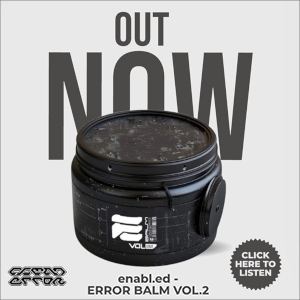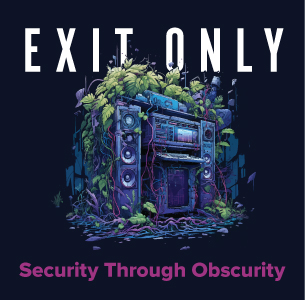Dense layers of sliced-up synth and organic tones, a heavily effected dulcimer melody that slips through the mix, and a glitchy beat that only coheres into a groove in the last minute.
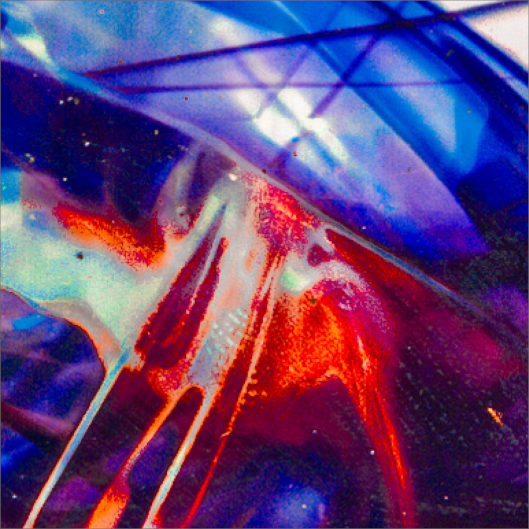
Generative electronic music can be a risky proposition. In the best case, beautiful accidents can open new realms of auditory exploration. On the other end of the spectrum, relying on modular, looping, or software patches that feed back into themselves can build stochastic audio sculptures that work for machines but leave us mere humans out in the cold. Fortuitously, Sceptre Fretpen, a duo from Portland, Oregon whose new album Earthquake Park extends the generative processes they introduced on 2017’s Plugh EP (Sparkwood), uses these techniques as a starting point to build intricate and satisfying tracks, rather than a purely academic end state.
The album opens with “Looking Forward,” a downtempo roller that sets the stage with a dizzying array of layered tones that include acoustic guitar, organ, and a richly buzzing synth. Though elements drift in and out of the mix, there’s a cohesion to the sonic layers which grab the listener’s attention. “Frostignites” and “Growing Springs” are sub-three minute tracks that nevertheless pack dense percussive and textural elements into their short runtime.
Zak Schulhoff, who shares guitar and synthesizer duties with Phil Gregory, described their songwriting process: “Song building is generally an iterative process of improvisation. We start with extended improvised jam sessions where we run our instruments through sometimes fairly elaborate signal processing chains comprised of various pedal-based effects. We use assorted looper pedals to sample ourselves and each other in the moment, and are able to feed these loops back into the effects chains whereupon we can sample them yet again.”
“Silverleaf” got an early public release, probably because it deftly encapsulates all that Earthquake Park is about: dense layers of sliced-up synth and organic tones, a heavily effected dulcimer melody that slips through the mix, and a glitchy beat that only coheres into a groove in the last minute. Tracks like “Tangents Mansion” and “Holding Dots” follow a similar sonic template but reach into dub and leftfield techno, respectively.
Album closer “Kineticbreath” leans heavily on tempo-synced delays of various lengths to provide a rolling percussive foundation, guitar strums that seem to swell in reverse, and finally a run out groove on a gritty lo-fi synth. Schulhoff comments, “Live guitar is definitely a thing we do during our improvised sessions. We live loop and reprocess again and again and again until it becomes hard to tell who did what and what instrument it was in the first place.”
It’s complex music, both the published result and the process which created it. Schulhoff again: “Typically we build up numerous layers of rhythmic, textural, melodic, and harmonic elements. Then it becomes a subtractive process, where we just need to carve away all the parts that are not the song, just as a sculptor carving a bust from a block of marble just needs to remove all the material that is not the sculpture.” The parts which remain, fortunately for the listener, are varied and evolving, engaging rather than indulgent.
Earthquake Park is available March 21 2019 via Bandcamp.






